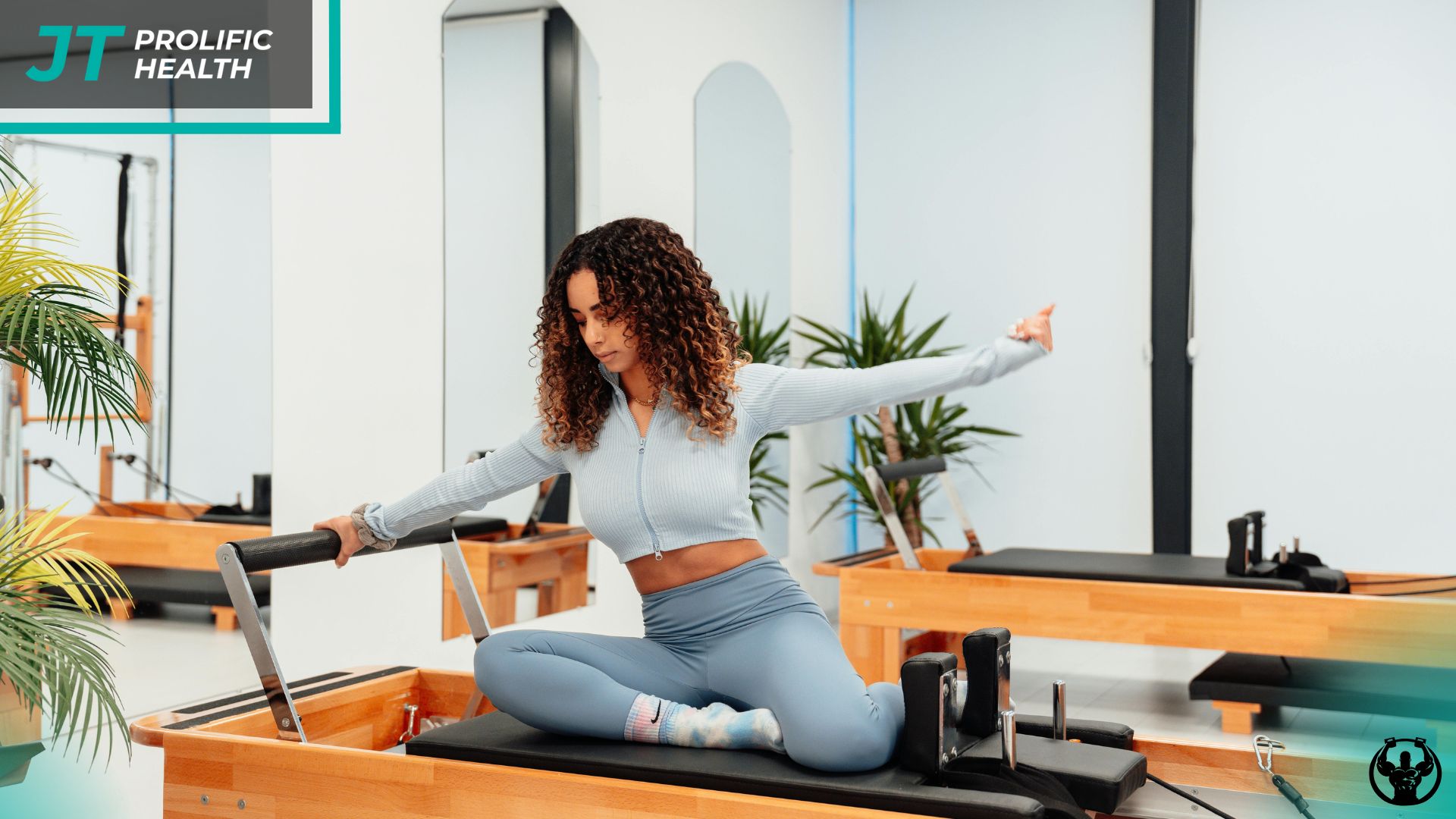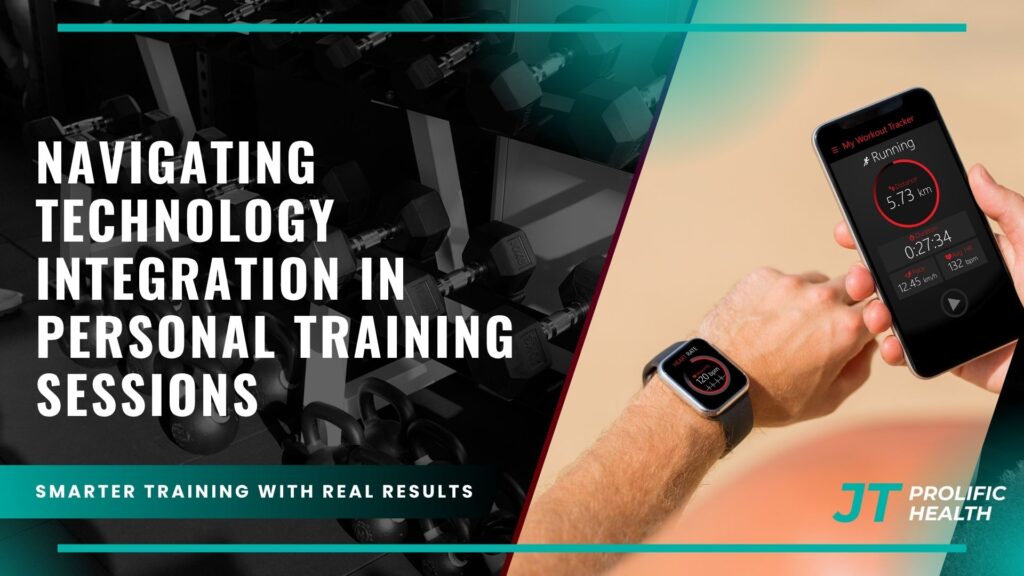The fitness industry has undergone a remarkable transformation in recent years, with technology integration becoming a cornerstone of modern personal training practices. What once relied solely on traditional methods like clipboards, stopwatches, and manual tracking has evolved into a sophisticated ecosystem of digital tools, wearable devices, and smart applications that enhance every aspect of the training experience.
Personal trainers today find themselves at the intersection of fitness expertise and technological innovation. The integration of fitness technology tools has revolutionized how trainers design programs, monitor client progress, and maintain engagement between sessions. From heart rate monitors and fitness tracking apps to virtual reality workout experiences and AI-powered form analysis, the possibilities seem endless.
However, navigating this technological landscape can feel overwhelming for both trainers and clients. The challenge lies not just in understanding what technology is available, but in determining which tools truly add value to the training experience without creating unnecessary complexity or distraction. The goal is to enhance the human connection and expertise that makes personal training effective, rather than replace it with gadgets and apps.
The most successful technology integration in personal training occurs when digital tools seamlessly support the trainer’s methodology while providing clients with meaningful insights into their progress. This requires careful consideration of each client’s comfort level with technology, their specific fitness goals, and how different tools can complement rather than complicate their training journey.
Understanding the strategic implementation of technology in personal training sessions has become essential for modern fitness professionals. The key is finding the right balance between leveraging innovative tools and maintaining the personalized, human-centered approach that makes personal training so effective. This integration should enhance motivation, improve accuracy in tracking progress, and provide valuable data that informs better training decisions.
Key Takeaways
- Strategic Selection Over Saturation: The most effective technology integration focuses on choosing specific tools that align with client goals and trainer methodology, rather than adopting every available fitness technology. Quality and purpose should drive selection decisions.
- Client Comfort and Adoption: Successful technology integration requires assessing each client’s technological comfort level and gradually introducing tools that enhance rather than intimidate their training experience. Not every client will benefit from the same technological approach.
- Data-Driven Decision Making: Modern fitness technology tools provide unprecedented access to training data, from heart rate variability to movement patterns. The key is learning to interpret this data meaningfully and use it to make informed adjustments to training programs.
- Enhanced Communication and Accountability: Technology bridges the gap between training sessions through apps, progress tracking platforms, and virtual check-ins. This continuous connection helps maintain momentum and accountability throughout the week.
- Cost-Benefit Analysis: While technology can significantly enhance training effectiveness, it’s important to weigh the costs of various tools against their actual benefits. The most expensive technology isn’t always the most effective for every training situation.
- Privacy and Security Considerations: As personal training becomes more data-driven, protecting client information and understanding privacy implications of various fitness apps and devices becomes increasingly important for professional trainers.
- Future-Proofing Training Methods: Technology integration should be viewed as an evolving process rather than a one-time implementation. Staying informed about emerging trends while maintaining focus on proven training principles ensures long-term success.
Understanding the Technology Integration Landscape


The current landscape of fitness technology tools presents both exciting opportunities and complex decisions for personal trainers. The market has exploded with options ranging from simple smartphone apps to sophisticated biometric monitoring systems, each promising to revolutionize the training experience. Understanding this landscape requires recognizing that technology integration isn’t about adopting every new gadget, but rather about strategically selecting tools that genuinely enhance the training process.
Wearable technology has emerged as one of the most accessible entry points for technology integration. Heart rate monitors, fitness trackers, and smartwatches provide real-time feedback during workouts while collecting valuable data for analysis. These devices offer insights into exercise intensity, recovery patterns, and daily activity levels that were previously impossible to track accurately. The key is helping clients understand how to interpret this data and use it constructively rather than becoming obsessed with numbers.
Mobile applications represent another significant category of fitness technology tools. From workout logging apps to nutrition trackers, these platforms can extend the trainer’s influence beyond the gym walls. The most effective apps integrate seamlessly with the trainer’s methodology, allowing for customized workout plans, progress photos, and direct communication between sessions. However, the abundance of available apps makes careful selection crucial to avoid overwhelming clients with too many platforms.
Advanced technologies like motion analysis software, virtual reality training systems, and AI-powered form correction are beginning to make their way into personal training studios. While these tools offer impressive capabilities, their integration requires significant investment in both equipment and training. The decision to adopt such advanced technology should be based on clear benefits to the client experience and the trainer’s ability to effectively utilize these sophisticated tools.
Essential Technology Tools for Modern Personal Training


The foundation of effective technology integration begins with identifying essential tools that provide the greatest impact on training quality and client outcomes. Heart rate monitoring systems top this list, offering real-time insights into exercise intensity and helping both trainers and clients understand the physiological demands of different exercises. Modern heart rate monitors go beyond simple pulse tracking, providing data on heart rate variability, recovery metrics, and training zones that inform more precise workout programming.
Fitness tracking applications serve as digital workout logs, replacing traditional pen-and-paper methods with comprehensive platforms that track exercises, weights, repetitions, and progress over time. The best applications allow trainers to create customized workouts, monitor client adherence, and adjust programs based on performance data. These platforms often include video libraries, exercise demonstrations, and progress tracking features that keep clients engaged between sessions.
Body composition analysis technology has revolutionized how trainers assess and track client progress. Advanced scales and handheld devices provide detailed breakdowns of muscle mass, body fat percentage, and hydration levels. This data offers more meaningful progress indicators than traditional weight measurements, helping clients understand the true impact of their training program. However, it’s crucial to educate clients about normal fluctuations in these measurements and focus on long-term trends rather than daily variations.
Video analysis tools enable trainers to capture and review client movement patterns, identifying form issues that might not be apparent during live instruction. Slow-motion replay and side-by-side comparisons help clients visualize their progress and understand technical corrections. Some advanced systems even provide automated form analysis using artificial intelligence, though human expertise remains essential for interpreting and acting on this feedback.
Communication platforms designed specifically for fitness professionals facilitate ongoing client relationships through secure messaging, progress sharing, and virtual check-ins. These tools help maintain accountability and motivation between sessions while providing trainers with insights into client challenges and successes. The key is choosing platforms that enhance rather than complicate the trainer-client relationship.
Implementation Strategies for Seamless Integration


Successful technology integration requires a thoughtful, phased approach that considers both trainer capabilities and client readiness. The implementation process should begin with a comprehensive assessment of current training methods and identification of specific areas where technology could provide the most significant benefits. This assessment helps prioritize which tools to introduce first and ensures that technology adoption aligns with established training philosophies rather than disrupting them.
The gradual introduction of technology tools prevents overwhelming clients while allowing trainers to master each system before adding complexity. Starting with basic tools like fitness tracking apps or simple heart rate monitors allows both parties to become comfortable with the technology before progressing to more sophisticated systems. This approach also provides opportunities to assess which clients embrace technology readily and which prefer more traditional methods.
Client education plays a crucial role in successful technology integration. Trainers must invest time in teaching clients how to use new tools effectively, interpret the data they provide, and understand how this information relates to their fitness goals. This education should include practical training sessions where clients learn to operate devices, understand app interfaces, and develop habits for consistent data collection. The goal is to make technology feel like a natural extension of the training process rather than an additional burden.
Customization based on individual client needs and preferences ensures that technology integration enhances rather than hinders the training experience. Some clients thrive with detailed data and multiple tracking methods, while others prefer simpler approaches focused on basic metrics. Understanding each client’s unique needs helps determine the appropriate level of technology integration for their specific situation.
Regular evaluation and adjustment of technology tools ensures they continue to serve their intended purpose as client needs evolve and new technologies emerge. This ongoing assessment includes gathering client feedback, analyzing whether tools are being used consistently, and determining if the data collected is actually informing better training decisions. Technology that isn’t being used effectively should be simplified or replaced with more appropriate alternatives.
Overcoming Common Technology Integration Challenges
Technology resistance from clients represents one of the most common challenges in fitness technology integration. Many clients, particularly those from older demographics, may feel intimidated by new devices or skeptical about their value. Overcoming this resistance requires patience, clear communication about benefits, and demonstration of how technology can simplify rather than complicate their fitness journey. Starting with familiar devices like smartphones and gradually introducing more specialized equipment helps build confidence and comfort.
Data overload presents another significant challenge as the abundance of metrics available through modern fitness technology can overwhelm both trainers and clients. The key is focusing on a few meaningful indicators that directly relate to specific goals rather than trying to track everything possible. For weight loss clients, this might mean emphasizing body composition changes and caloric expenditure, while strength training clients might focus on progressive overload metrics and recovery indicators.
Technical difficulties and device malfunctions can disrupt training sessions and frustrate clients who are already hesitant about technology adoption. Successful trainers develop backup plans and alternative methods for every technology-dependent aspect of their training programs. This includes having spare devices available, understanding manual alternatives to digital tracking, and maintaining flexibility when technology fails to perform as expected.
Cost considerations affect both trainers and clients when implementing comprehensive technology solutions. While some tools provide excellent value, others may not justify their expense for every training situation. Comparing the costs and benefits of different technology options helps make informed decisions about which investments will provide the greatest return in terms of improved training outcomes and client satisfaction.
Privacy and data security concerns have become increasingly important as fitness technology collects more personal information. Trainers must understand the privacy policies of the tools they recommend, ensure client data is protected, and be transparent about how information is collected and used. This includes selecting reputable technology providers, understanding data sharing practices, and helping clients make informed decisions about their privacy preferences.
Integration complexity increases when multiple technology platforms don’t communicate effectively with each other. Clients may become frustrated managing multiple apps or devices that don’t share data seamlessly. Choosing technology ecosystems that work together or finding platforms that can aggregate data from multiple sources helps streamline the user experience and reduces the administrative burden on both trainers and clients.
Advanced Technology Applications and Future Trends
Artificial intelligence and machine learning are beginning to transform personal training through sophisticated analysis of movement patterns, exercise form, and training adaptations. These systems can identify subtle changes in technique that human observation might miss and provide detailed feedback for improvement. While AI cannot replace the human expertise and motivation that personal trainers provide, it can enhance the precision and objectivity of form analysis and progress tracking.
Virtual and augmented reality technologies are creating immersive training experiences that can transport clients to different environments and provide engaging alternatives to traditional exercise routines. VR fitness programs can make cardio workouts feel like adventures while AR systems can overlay form cues and motivation directly into the client’s field of view. These technologies are particularly valuable for clients who struggle with motivation or find traditional exercise routines monotonous.
Biometric monitoring is becoming increasingly sophisticated, with devices capable of tracking metrics like blood oxygen levels, stress indicators, and sleep quality. This comprehensive health data provides trainers with deeper insights into client recovery and readiness for training. Understanding optimal training frequency becomes more precise when informed by detailed recovery metrics and physiological indicators.
Smart gym equipment that automatically adjusts resistance, tracks performance, and provides real-time feedback is revolutionizing strength training. These machines can remember individual client settings, track progress over time, and even suggest appropriate weight progressions based on performance data. While the initial investment is significant, smart equipment can enhance training efficiency and provide consistent tracking across different exercises and sessions.
Telehealth integration is expanding the scope of personal training beyond physical exercise to include comprehensive wellness monitoring. Trainers can now access client health data from medical devices, coordinate with healthcare providers, and provide more holistic fitness guidance. This integration requires additional training and certification but offers opportunities to provide more comprehensive health and fitness services.
Predictive analytics using historical training data can help anticipate client needs, identify potential injury risks, and optimize training programs for better outcomes. These systems analyze patterns in performance, recovery, and adherence to predict when clients might need program modifications or additional support. While still in early stages, predictive analytics show promise for preventing plateaus and maintaining long-term client engagement.
Prolific Health: Leading Technology Integration in Richmond and Vancouver
Prolific Health has established itself as a pioneer in thoughtful technology integration within the Richmond and Vancouver fitness communities. Their approach demonstrates how personal training services can leverage modern fitness technology tools while maintaining the personalized attention and expertise that clients value most. The team at Prolific Health understands that technology should enhance rather than replace the human elements that make personal training effective.
The trainers at Prolific Health utilize a carefully curated selection of technology tools that have proven their value through real-world application with diverse client populations. Their integration strategy focuses on tools that provide actionable insights, improve training precision, and enhance client engagement between sessions. This selective approach ensures that clients benefit from technology without becoming overwhelmed by unnecessary complexity or gadgets that don’t contribute meaningfully to their fitness journey.
Client education remains a cornerstone of Prolific Health’s technology integration philosophy. Their preparation process for new clients includes comprehensive orientation to any technology tools that will be part of their training program. This education ensures that clients feel confident and comfortable using these tools, maximizing their benefits while minimizing frustration or confusion.
The team’s commitment to staying current with emerging fitness technology trends while maintaining focus on proven training principles sets them apart in the competitive Vancouver fitness market. They regularly evaluate new tools and technologies, testing them thoroughly before introducing them to client programs. This careful vetting process ensures that any new technology adoption truly enhances the training experience rather than serving as a marketing gimmick.
Prolific Health’s success with technology integration demonstrates that the future of personal training lies not in choosing between traditional methods and modern technology, but in thoughtfully combining the best of both approaches. Their clients benefit from cutting-edge tools and insights while receiving the personalized attention, motivation, and expertise that only experienced human trainers can provide.
Frequently Asked Questions
What basic technology should I expect from a modern personal trainer?
Most professional personal trainers today utilize fitness tracking apps for workout logging, heart rate monitors for intensity guidance, and progress tracking tools for measuring improvements over time. Certified trainers typically have more comprehensive technology tools and better understanding of how to use them effectively. Communication apps for between-session support and body composition analysis tools are also becoming standard in professional training services.
How much does fitness technology add to personal training costs?
Technology costs vary significantly depending on the tools used and who provides them. Some trainers include basic technology use in their standard rates, while others may charge additional fees for advanced monitoring or specialized apps. Many fitness technology tools can be shared between trainer and client, making them more cost-effective than individual purchases. The investment is often justified by improved results and better tracking capabilities.
Can technology replace the need for human personal trainers?
While fitness technology provides valuable data and guidance, it cannot replace the motivation, personalized attention, and adaptive expertise that human trainers provide. Technology works best when combined with professional guidance rather than as a replacement. Beginners especially benefit from human trainers who can interpret technology data and adjust programs based on individual needs and responses.
What if I’m not comfortable with technology during training sessions?
Professional trainers should accommodate different comfort levels with technology and never force tools that make clients uncomfortable. Many technology benefits can be achieved with simple, user-friendly devices that require minimal learning. The key is finding the right balance between helpful technology and personal comfort. Gradual introduction and proper education can help build confidence with fitness technology over time.
How do trainers ensure my fitness data remains private and secure?
Reputable trainers use established platforms with strong privacy protections and are transparent about data collection and usage. They should explain privacy policies for any apps or devices used and obtain consent before collecting personal health information. Professional trainers also follow industry standards for client confidentiality that extend to digital data. Always ask about data security practices when beginning a new training relationship.
What technology helps most with nutrition guidance during training?
Nutrition tracking apps, meal planning platforms, and educational tools help trainers provide comprehensive dietary guidance alongside exercise programming. Professional nutrition advice combined with tracking technology can significantly improve results. Photo-based food logging and macro tracking apps are particularly effective for helping clients understand their eating patterns and make sustainable improvements.
How often should fitness technology and tracking methods be updated?
Technology tools should be evaluated regularly to ensure they continue serving their intended purpose and meeting client needs. Software updates and new features may require periodic training sessions to maintain effectiveness. Progress tracking methods may need adjustment as clients advance and their goals evolve. The focus should always be on maintaining tools that provide value rather than constantly chasing the newest technology.
What happens if technology fails during a training session?
Professional trainers always have backup plans and alternative methods for every aspect of their technology-enhanced programs. Manual tracking, traditional timing methods, and perceived exertion scales can substitute for digital tools when needed. Technology should enhance rather than depend upon training effectiveness, so sessions can continue productively even when devices malfunction. Good trainers view technology as helpful tools rather than essential requirements for successful training.
Conclusion
The integration of technology in personal training represents an evolution rather than a revolution in fitness services. The most successful implementations recognize that technology should amplify the expertise, motivation, and personalized attention that make personal training valuable, rather than attempting to replace these fundamentally human elements. As the fitness industry continues to embrace digital innovation, the trainers who thrive will be those who can thoughtfully select and implement tools that genuinely enhance client outcomes.
The key to successful technology integration lies in maintaining focus on client goals and preferences while leveraging data and tools that provide actionable insights. Whether through simple heart rate monitoring or sophisticated movement analysis, technology should make training more effective, engaging, and informative. However, the human connection between trainer and client remains the cornerstone of successful fitness transformation, with technology serving as a powerful supporting tool rather than the primary driver of results.
As fitness technology continues advancing, personal trainers must balance staying current with emerging tools while avoiding the temptation to adopt every new gadget or app. The most valuable technology investments are those that solve specific problems, improve training precision, or enhance client engagement in measurable ways. This strategic approach ensures that technology integration contributes to better outcomes rather than creating unnecessary complexity or distraction from proven training principles.
The future of personal training will undoubtedly include even more sophisticated technology tools, but the fundamental value proposition will remain unchanged: helping individuals achieve their fitness goals through expert guidance, motivation, and personalized programming. Technology integration simply provides new ways to deliver these core services more effectively, efficiently, and engagingly than ever before.




